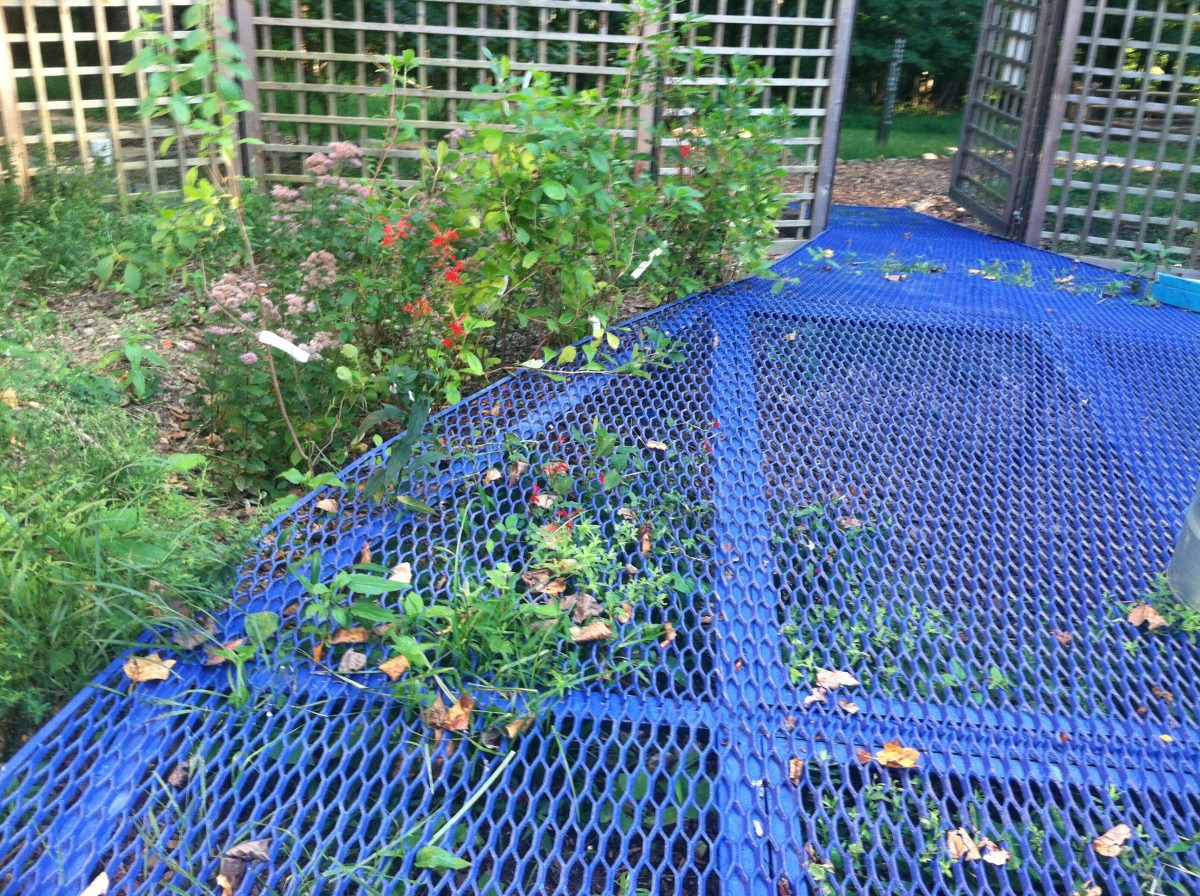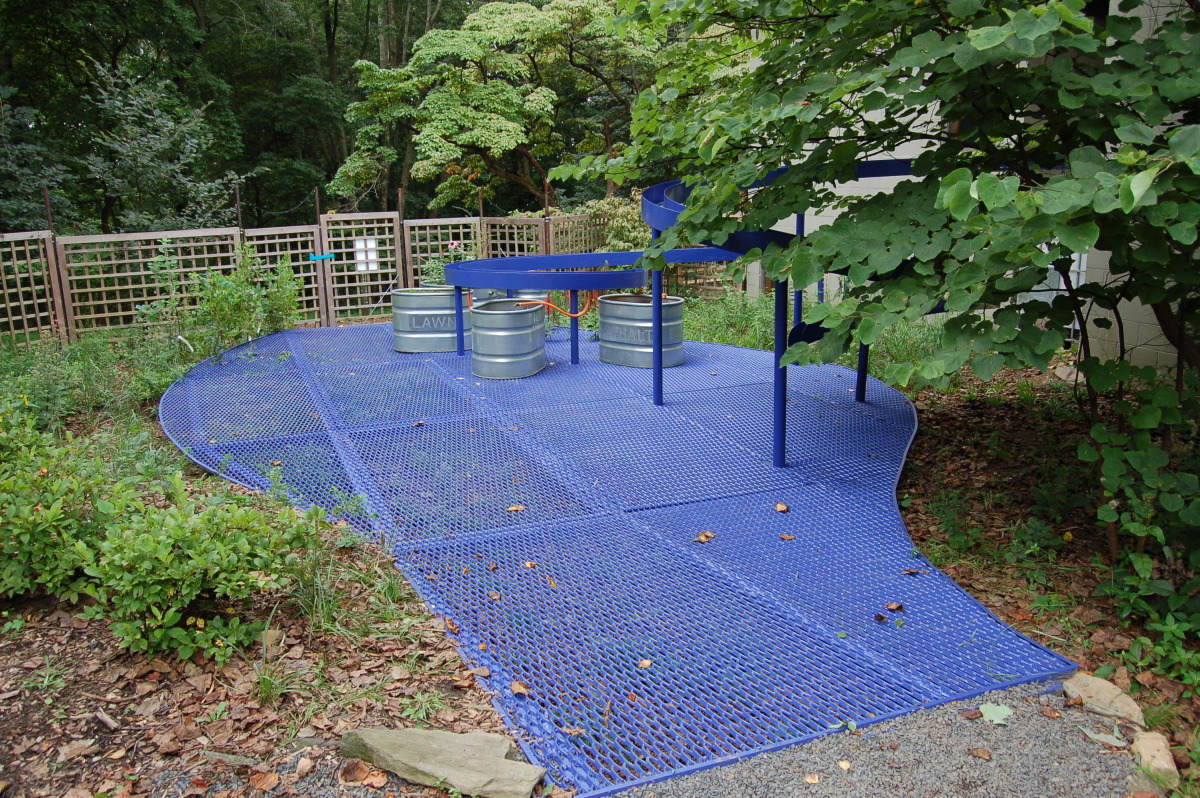On the scale of the entire city of Philadelphia, this storm water flushes into our creeks and rivers, taking with it raw sewage, turning nearly every significant rain into a Clean Water Act violation. Philadelphia’s Green City, Clean Waters plan endeavors to fix this problem through a range of measures. Many of these use soil, plants and other permeable surfaces to slow the rain and give it time and space to soak into the ground.
The Schuylkill Center for Environmental Education faced a similar problem to the city’s, albeit on a smaller scale. Rain that once met a forest hit an impermeable roof and washed away vegetation and soil in channels around the Center’s Education Building. “The center is built right at the top of a the hill,” says Stacy Levy, the artist behind the center’s new Rain Yard installation. “[The center shed] too much water for the soil there to absorb. … There was this huge issue, and it would be really great to have the building be responsible for its rain. If an environmental center can’t be responsible who can be? It’s like a smoking doctor.”
“I’ve been on this kick to have our artworks help the land restoration,” says Jenny Laden, then-Director of Environmental Art at the Center, when photographer Christian Hunold and I visited the newly-installed Rain Yard last October. Laden invited Levy to explore a project addressing the building’s runoff problem, and they built it with the help of a National Endowment for the Arts grant and volunteers from steel company ArcelorMittal.
“Let’s show how an artwork can serve the ecosystem, engage visitors in education, and be artistic,” Laden says. Visitors walk on a metal grate set above a basin planted with native wetland vegetation. The basin receives most of the water that runs off a section of the Education Building’s roof, but some is diverted into a cistern. This cistern feeds a ‘play runnel,’ a swooping metal aqueduct that allows visitors to shoot rainwater into containers with five surfaces of varying permeability: asphalt, gravel, lawn, meadow, and concrete, making it simple to observe how water that flows right off the harder surfaces soaks gently into the meadow.
It isn’t difficult to translate the flow into the containers or the basin into the stormwater challenges we face as a city. As Levy put it, “The rain doesn’t just need its place but its time too. It needs its time to soak in,” as true for Philadelphia as it is for a nature center.
Story by Bernard Brown, photos courtesy Stacy Levy













